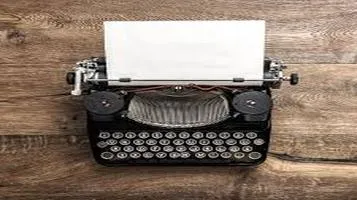Typewriters: A Nostalgic Journey into the World of Mechanical Writing
Typewriters are mechanical or electromechanical devices used for writing characters similar to those produced by printers' movable type. They gained popularity in the late 19th century and became indispensable tools for businesses, authors, and journalists throughout the 20th century. Typewriters operate by striking an inked ribbon against paper, thus imprinting letters and symbols. Each key corresponds to a specific character, with early models featuring complex arrangements of levers and hammers. The introduction of the QWERTY keyboard layout standardized typing across different machines. Despite being largely replaced by computers and word processors, typewriters hold a nostalgic charm and are cherished by collectors and enthusiasts. Their tactile feedback, iconic design, and distinctive sound evoke a sense of craftsmanship and simplicity from a bygone era.

The typewriter, a device that once stood at the pinnacle of technological advancement, now occupies a nostalgic niche in the annals of writing history. For over a century, typewriters were indispensable tools for writers, journalists, and office workers. Though largely replaced by computers and word processors, typewriters retain a unique charm and continue to attract enthusiasts who cherish the tactile and auditory feedback they provide. This review delves into the allure of typewriters, their historical significance, and their role in the modern world.
Historical Significance
The typewriter's journey began in the 19th century, with the invention of the Sholes and Glidden typewriter, also known as the Remington No. 1, in 1874. This groundbreaking device revolutionized the way people wrote, offering a faster and more efficient alternative to handwriting. The typewriter's impact was profound, particularly in the realms of business and journalism. It enabled the rapid production of documents, facilitated clear and legible text, and democratized the act of writing by making it more accessible to the masses.
The typewriter's design evolved over time, with various models and features catering to different needs. From the early manual typewriters to the electric models of the mid-20th century, these machines became more sophisticated, incorporating innovations such as the QWERTY keyboard layout, the shift key, and later, correction mechanisms.
Tactile and Auditory Satisfaction
One of the most compelling aspects of using a typewriter is the sensory experience it offers. The tactile feedback of pressing each key and the distinct "clack" sound as the typebar strikes the ribbon and paper create a rhythmic and satisfying cadence. This physicality is absent in modern keyboards, which often feel detached and impersonal. Typing on a typewriter engages not just the fingers, but the entire hand, instilling a sense of connection with the act of writing.
Moreover, the mechanical nature of typewriters means that each keystroke requires deliberate effort. This can lead to a more thoughtful and intentional writing process, as the writer is less likely to produce hasty or careless text. The absence of distractions such as notifications and the internet further enhances focus, allowing for a more immersive writing experience.
Aesthetic Appeal
Typewriters possess an undeniable aesthetic appeal. Their vintage designs, often featuring ornate details and robust metal bodies, make them attractive collectibles. Many people appreciate the craftsmanship and engineering that went into creating these machines. Restoring and maintaining typewriters has become a popular hobby, with enthusiasts seeking out rare models and refurbishing them to their former glory.
In addition to their visual appeal, typewriters produce a unique typeface that is instantly recognizable. The slightly irregular and imperfect characters lend a distinctive charm to the text, evoking a sense of authenticity and nostalgia. For creative writers, poets, and artists, this can add an extra layer of meaning and personality to their work.
Modern Relevance
Despite their obsolescence in the face of digital technology, typewriters have experienced a resurgence in recent years. This revival can be attributed to several factors. Firstly, there is a growing appreciation for analog tools in an increasingly digital world. People are seeking ways to disconnect from screens and engage in more tangible and mindful activities. Typewriters offer a refreshing alternative, allowing for a break from the constant barrage of digital information.
Secondly, the typewriter's simplicity and durability make it an attractive option for those who value sustainability. Unlike modern electronics, which often become obsolete within a few years, typewriters can last for decades with proper care. They require no electricity, produce no electronic waste, and can be easily repaired. This aligns with the principles of minimalism and environmental consciousness that are gaining traction today.
Furthermore, typewriters have found a niche among writers who appreciate the constraints they impose. The inability to easily delete or edit text encourages a different approach to writing, one that emphasizes careful planning and consideration. This can be particularly beneficial for overcoming writer's block, as the act of physically committing words to paper can help bypass mental barriers.
Conclusion
In conclusion, typewriters are more than just relics of a bygone era. They represent a unique intersection of history, craftsmanship, and sensory satisfaction. While they may no longer be the primary tool for writing, their enduring appeal lies in the distinct experience they offer. For those who appreciate the tactile feedback, aesthetic charm, and deliberate nature of typewriting, these machines provide a refreshing and nostalgic alternative to modern digital devices. As we continue to navigate the complexities of the digital age, the typewriter remains a testament to the enduring value of simplicity and intentionality in the art of writing.






